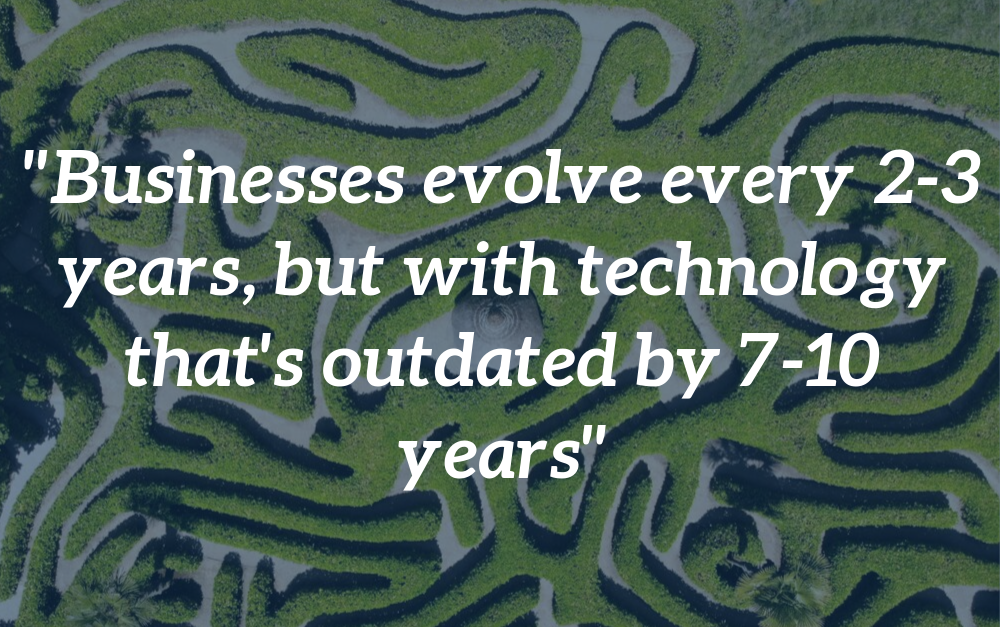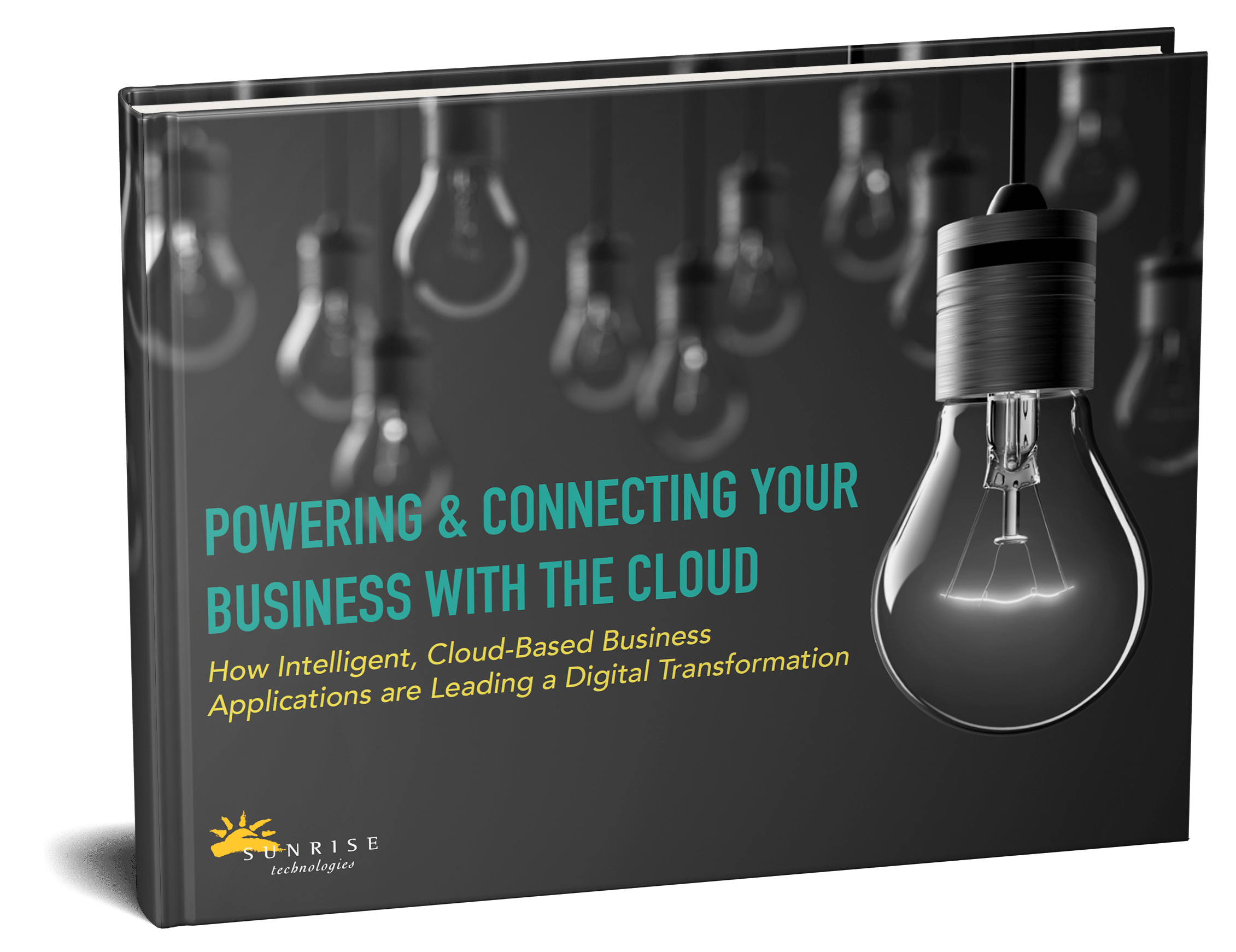
5 Hidden Costs of Doing Nothing
Putting off your on-premise ERP replacement may be costing more than you think
As the SVP of Global Business Development for Sunrise Technologies, Cem Item serves as a trusted advisor to C-level executives running large global enterprises. He conducts corporate business strategy engagements and digital transformation workshops around the world. With over 20 years of consulting experience, Cem specializes in the textile, apparel, footwear, home furnishings, consumer goods manufacturing, and retail industries.
A lot has changed in the few years since cloud computing has become the norm. Very often, we talk to people who are thinking about moving to the cloud, or a new ERP project, but they just can’t wrap their heads around the cost and potential for business disruption. And that’s understandable – an ERP project is a huge undertaking.
But what we wish more people would consider is that the costs of maintaining legacy systems or using outdated business processes is often much higher than an ERP implementation. It’s just tougher to spot these costs. They’re usually so embedded in a company’s way of doing things, that they show up as lost time, lost productivity, and frustrating processes due to outdated technology.
You know your business – but have you quantified all the ways doing nothing is costing your business?

Why Do Organizations Delay Digital Transformation?
Some decision-makers delay digital transformation or spend too much time weighing the pros and cons of cloud computing, thinking their current systems can last for a few more years. But what people may not realize is that the cost of doing nothing – and staying on legacy or on-premise systems – is much riskier in our new world of cloud-based business applications. You could be exposing your business to losses in revenue, security flaws, and system failures.
It may seem like doing nothing is the safest option, but that way of thinking is counterproductive in this new reality of cloud-based infrastructure. Moving to the cloud (and using a cloud-based ERP system) means a company can quickly modify their business models or processes to adapt to changing conditions in their industry. More and more businesses are pursuing growth through acquisition, and folding in newly acquired companies to ancient accounting and supply chain systems can end up costing millions of dollars.
We’re living through a cloud computing renaissance, and companies that don’t adapt are failing. For retail, apparel and fashion companies, the landscape is littered with organizations that have gone out of business, been acquired, or are shadows of their former selves.
All too often, these businesses failed because they couldn’t adapt their business models to serve their customers. And their IT and supply chain systems play a huge role in those failures. Outdated, on-premise, expensive systems that take years of time and millions of dollars to reconfigure to match the new reality – and then the reality changes again. Instead, you could be using a system that is always modern and updated, and ready for whatever twists and turns your industry takes.
Have you thought about the following issues, and considered whether your aging systems are partly to blame?
Losing customers | Losing time | Losing staff | Losing visibility | Losing security
Let’s dig into those 5 areas of your business where the costs of doing nothing might be much higher than you think.
1. Losing customers
If you’re a consumer brand, and you make it hard for consumers to buy your products, they will drop you like a hot potato.
According to Microsoft’s Global State of the Customer report, 66% of US consumers polled ranked customer service as “very important” in their choice of a brand and brand loyalty. But since we know legacy systems don’t easily communicate with CRM and other customer service applications, companies using outdated systems often run into problems.
Everything – from your e-commerce platform to your POS system to your customer service center, right down to your fulfillment center – should create a seamless experience for your customers to buy, exchange, and return products. Look at these warning signs of degrading customer service:
• Complaints about promotional pricing issues
• Complaints about the shopping experience, whether it’s in the store, online, or over the phone
• Delivery issues and shipping delays
• Increase in returns and chargebacks
• Increase in shipping costs
• Purchase histories are spread out across multiple databases
• Your customer service reps’ response time is slowing down; they use multiple systems to answer customer questions.
• Your systems are holding you back from testing new channels like pop-up stores, tradeshows, or wholesale orders online – it’s a huge project just figuring out how you’re going to make those orders work in your system
If you think of every bullet point as an opportunity for lost sales…well, that’s a lot of lost sales.
2. Losing Time
Cliché but true: time is the most valuable resource. And if you are constantly dealing with workarounds and fixes for your outdated ERP system, that’s time you could have spent on revenue-generating projects. On an intellectual level, you know this. In day-to-day operations, though, it’s difficult to quantify lost time. But if your organization is guilty of the following, you’ve got problems:
• Your team members spend more than half the month trying to close out the previous month
• People must ask for reports days or weeks in advance (because it takes days or weeks to create reports)
• People worry about the accuracy of the data they receive, so they hesitate to make decisions
• People are frustrated with the current system, and they come up with their own lengthy workarounds and processes just to avoid using it
• IT is tasked with finding solutions, but not enough budget, and end up buying the equivalent of a box of Band-Aids
Forrester’s Total Economic Impact study for Microsoft Dynamics 365 found that companies who implemented D365 improved operations efficiency by $39 million. When you add in automation, better user experience, reduced rework, and enhanced forecasting, employee productivity increased by $20.6 million.
Look, you can tell yourself it’s fine, or it’s not that bad. But you’re falling behind your competitors. The hours you spend maintaining legacy systems and hardware are hours you could have spent growing the business. Ask your team what projects they would pursue if they didn’t have to maintain whatever dinosaur of a system is back there. How much money are you losing because your employees aren’t innovating, they’re stagnating? Which brings us to….
3. Losing Staff
One of our customers had an interesting problem – their legacy ERP system was still chugging along, but it was getting harder to find IT staff to manage it!
Their system had been around since the early 90s, and several employees were getting ready to retire. All the young, smart IT professionals that this company wanted to hire either had no experience with this green-screen behemoth, or they weren’t interested in working for an organization where their skills would go towards maintaining a dying system.
If your best employees are being lured away to work on new and exciting technology projects, or at the very least, work someplace with technology that isn’t older than they are, it’s way past time for you to think about your long-term strategy. No one wants to jump on a sinking ship.
Not to mention, it’s getting harder for technology vendors to survive. Smaller software vendors are getting gobbled up and on-premise systems are being sunset.

4. Losing Visibility
You can’t trim costs, correct issues, or grow revenue, without control and visibility. But the biggest problem with legacy infrastructure is an inability to control the weakest links of the supply chain. Ask yourself:
• Are inventory and supply chain movements disconnected from the financials, making it impossible to get a real-time view of the business?
• Is one channel hoarding inventory from another channel, leaving excess inventory in one area and shortages in another?
• Do you have trouble completing orders on time and are you unable to provide available-to-promise estimates?
• Are your POS, CRM, and ERP systems already in the cloud, but different clouds with separate vendors and billing cycles that is costing you way more than if they were consolidated on a single platform?
• Do you lack real-time information to make the best decisions quickly because data is locked in silos?
5. Losing Peace of Mind (Because of Security Risks)
Security risks are frightening. And while it’s true that any business can fall victim to a cyberattack, some setups are more vulnerable than others. Think about what would happen to your brand’s reputation if your company was hacked. Can you quantify (or do you even want to think about) the total dollar amount of lost sales from a security incident? Think of each of these points as a crack in your IT’s foundation, exposing you to cybersecurity risks:
• How much time, effort, and money does it take to maintain your current infrastructure, custom code, and integrations?
• Have you cobbled together a bunch of third-party products to make your processes flow the way you want and have trouble reporting and keeping the system up to date?
• How much capital and resources are sunk into maintaining hardware?
The Hidden Costs of Maintaining the Status Quo
Some people think the cost of doing nothing is…free.
Frankly, those people are wrong.
The money you think you’re saving by putting off an ERP or digital transformation project could be slipping away. If your supply chain and underlying technology infrastructure can’t adapt to meet your company’s growth initiatives or customer demand, then your company’s survival in this new, cloud- centric world is at risk. We won’t dive deep into all the advantages of the cloud here. There’s simply too many for this blog post, and that’s why we wrote this cloud eBook.
READY TO SEE MORE?
The new landscape of business applications is exciting. It’s possible to get the cloud ERP system of your dreams at a tremendous value, with the industry-specific extensions you need, and without expensive customizations.
If you’ve realized it’s too costly to wait any longer on updating your systems, let’s schedule a digital transformation workshop.




